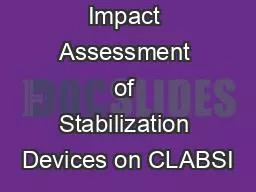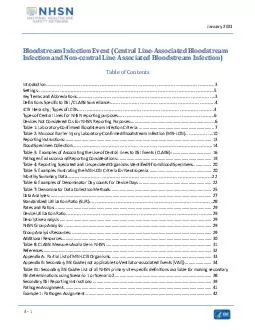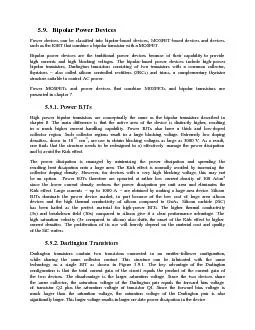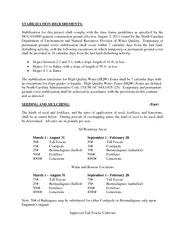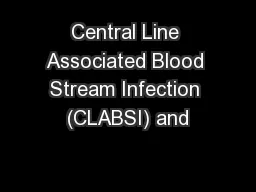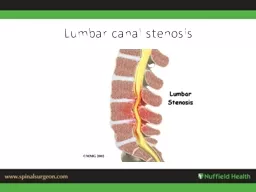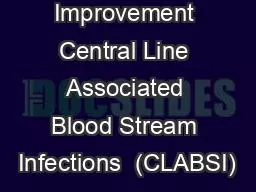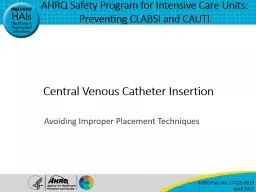PPT-Impact Assessment of Stabilization Devices on CLABSI
Author : adhesivedisney | Published Date : 2020-10-06
Mark Rowe MNSc RNP VABC Mark is a graduate of the University of Arkansas for Medical Sciences UAMS with both his Bachelors and Masters in Nursing Science His initial
Presentation Embed Code
Download Presentation
Download Presentation The PPT/PDF document "Impact Assessment of Stabilization Devic..." is the property of its rightful owner. Permission is granted to download and print the materials on this website for personal, non-commercial use only, and to display it on your personal computer provided you do not modify the materials and that you retain all copyright notices contained in the materials. By downloading content from our website, you accept the terms of this agreement.
Impact Assessment of Stabilization Devices on CLABSI: Transcript
Download Rules Of Document
"Impact Assessment of Stabilization Devices on CLABSI"The content belongs to its owner. You may download and print it for personal use, without modification, and keep all copyright notices. By downloading, you agree to these terms.
Related Documents

